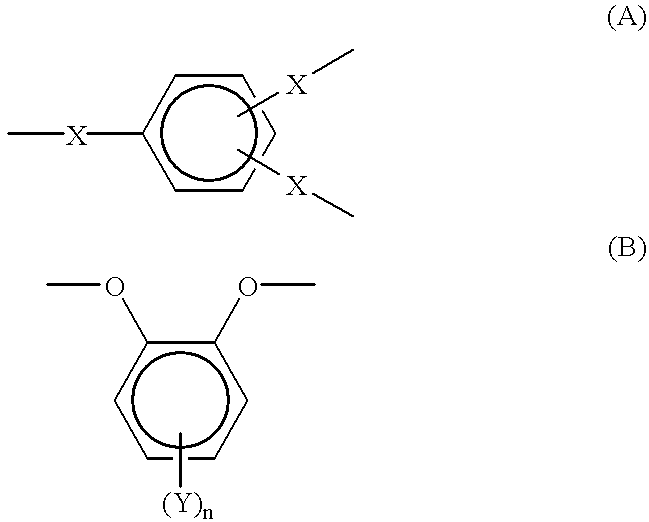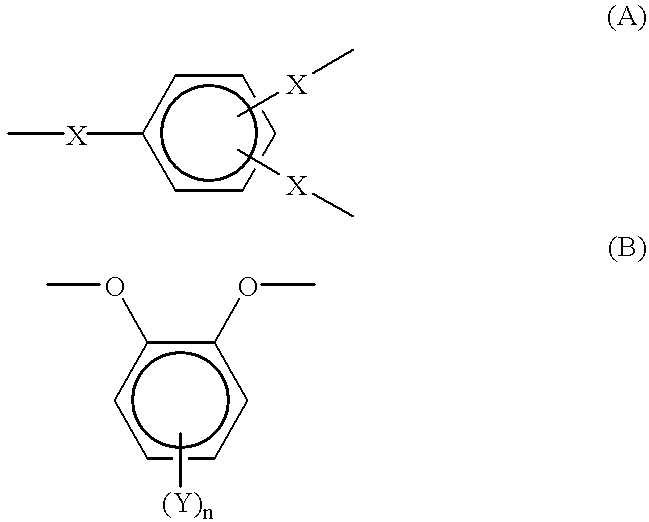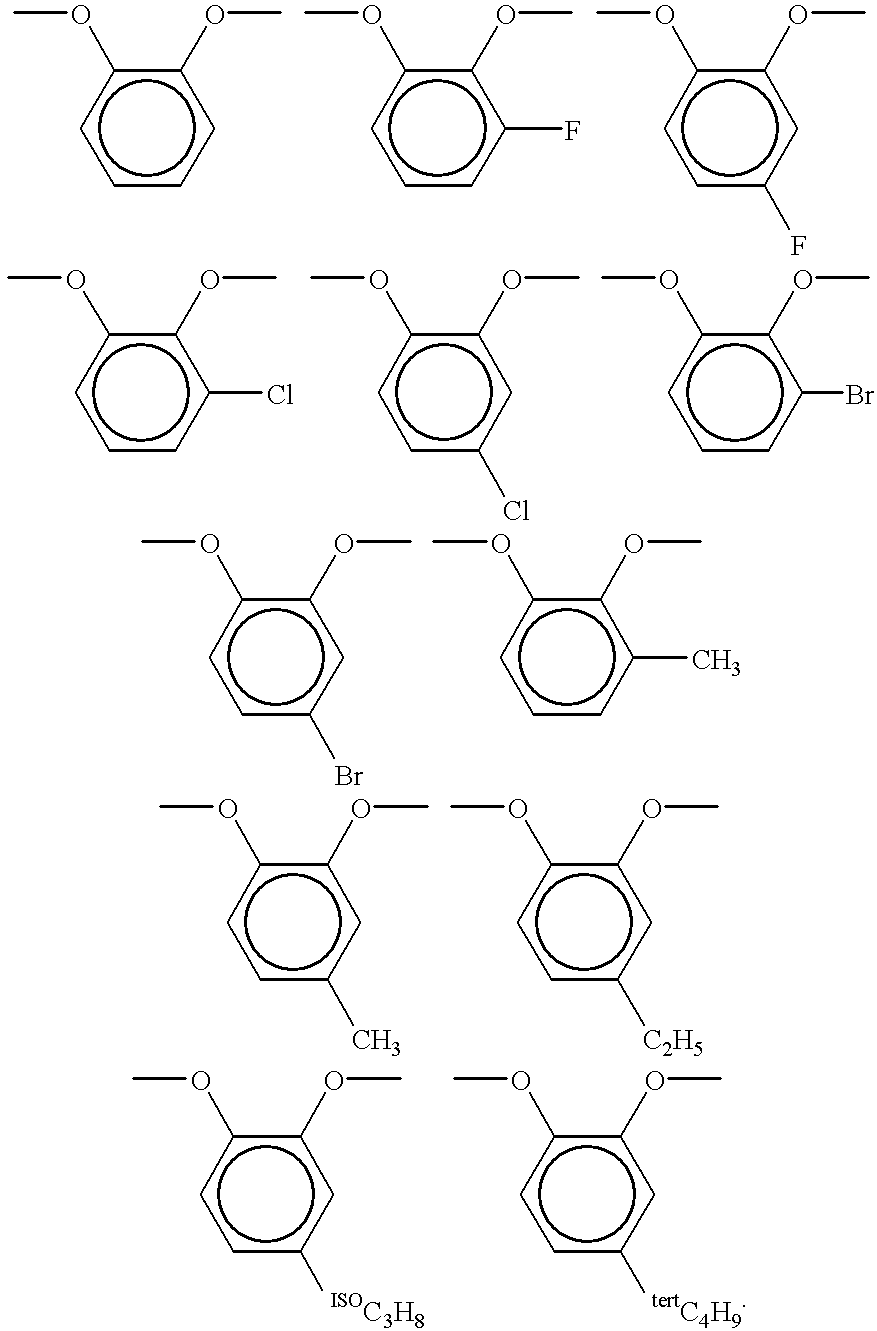Optical film
- Summary
- Abstract
- Description
- Claims
- Application Information
AI Technical Summary
Benefits of technology
Problems solved by technology
Method used
Image
Examples
example 1
100 mmol of p-acetoxybenzoic acid, 85 mmol of terephthalic acid, 10 mmol of trimesic acid, 50 mmol of methylhydroquinone diacetate, and 50 mmol of catechol diacetate were stirred under heating at 280.degree. C. for 8 hours in a current of nitrogen to prepare a polyester. Inherent viscosity, .eta..sub.inh of the polyester was 0.200 (dl / g). As a result of DSC measurement and observation using the polarizing microscope it turned out that Tg was 98.degree. C., with glass phase formed, and that a nematic phase was exhibited at a temperature higher than Tg. There was prepared a 15 wt % solution of the polyester in a mixed phenol / tetrachloroethane solvent (60 / 40 weight ratio), which solution was then applied onto a glass sheet having a rubbed polyimide film by a spin coating method. The thus-coated glass sheet was then dried on a hot plate at 70.degree. C. for 1 hour, then heat-treated in a clean oven at 200.degree. C. for 30 minutes, then taken out from the oven and allowed to cool natura...
examples 2-5
In the same way as in Example 1 liquid crystalline polyesters of Examples 2 to 5 were prepared and films were formed therefrom, which were then subjected to an orientation holding performance test. Properties of the polyesters thus prepared, conditions for the orientation holding performance test, and the results of the test are shown in Table 2, from which it is seen that all of the polyesters permit fixing of a nematic phase and possess an orientation holding ability as in Example 1.
example 6
100 mmol of p-acetoxybenzoic acid, 88 mmol of terephthalic acid, 8 mmol of trimesic acid, 50 mmol of methylhydroquinone diacetate, and 50 mmol of catechol diacetate were stirred under heating at 275.degree. C. for 10 hours in a current of nitrogen to prepare a polyester. Inherent viscosity .eta..sub.inh of the polyester was 0.181 dl / g. As a result of DSC measurement and observation using the polarizing microscope it turned out that, as shown in Table 8, Tg was 110.degree. C., with glass phase formed, and that a nematic phase was exhibited at a temperature higher than Tg.
The polyester was melt-mixed with an optically active polyester shown in Table 9 at a weight ratio of 95:5 to afford a composition. Thereafter, a solution containing 15 wt % of the composition in a mixed phenol / tetrachloroethane (60 / 40 weight ratio) solvent was prepared. The solution thus prepared was then applied onto a glass sheet having a rubbed polyimide film by means of a spin coating method.
After subsequent dry...
PUM
| Property | Measurement | Unit |
|---|---|---|
| Temperature | aaaaa | aaaaa |
| Angle | aaaaa | aaaaa |
| Electric charge | aaaaa | aaaaa |
Abstract
Description
Claims
Application Information
 Login to View More
Login to View More - R&D
- Intellectual Property
- Life Sciences
- Materials
- Tech Scout
- Unparalleled Data Quality
- Higher Quality Content
- 60% Fewer Hallucinations
Browse by: Latest US Patents, China's latest patents, Technical Efficacy Thesaurus, Application Domain, Technology Topic, Popular Technical Reports.
© 2025 PatSnap. All rights reserved.Legal|Privacy policy|Modern Slavery Act Transparency Statement|Sitemap|About US| Contact US: help@patsnap.com



